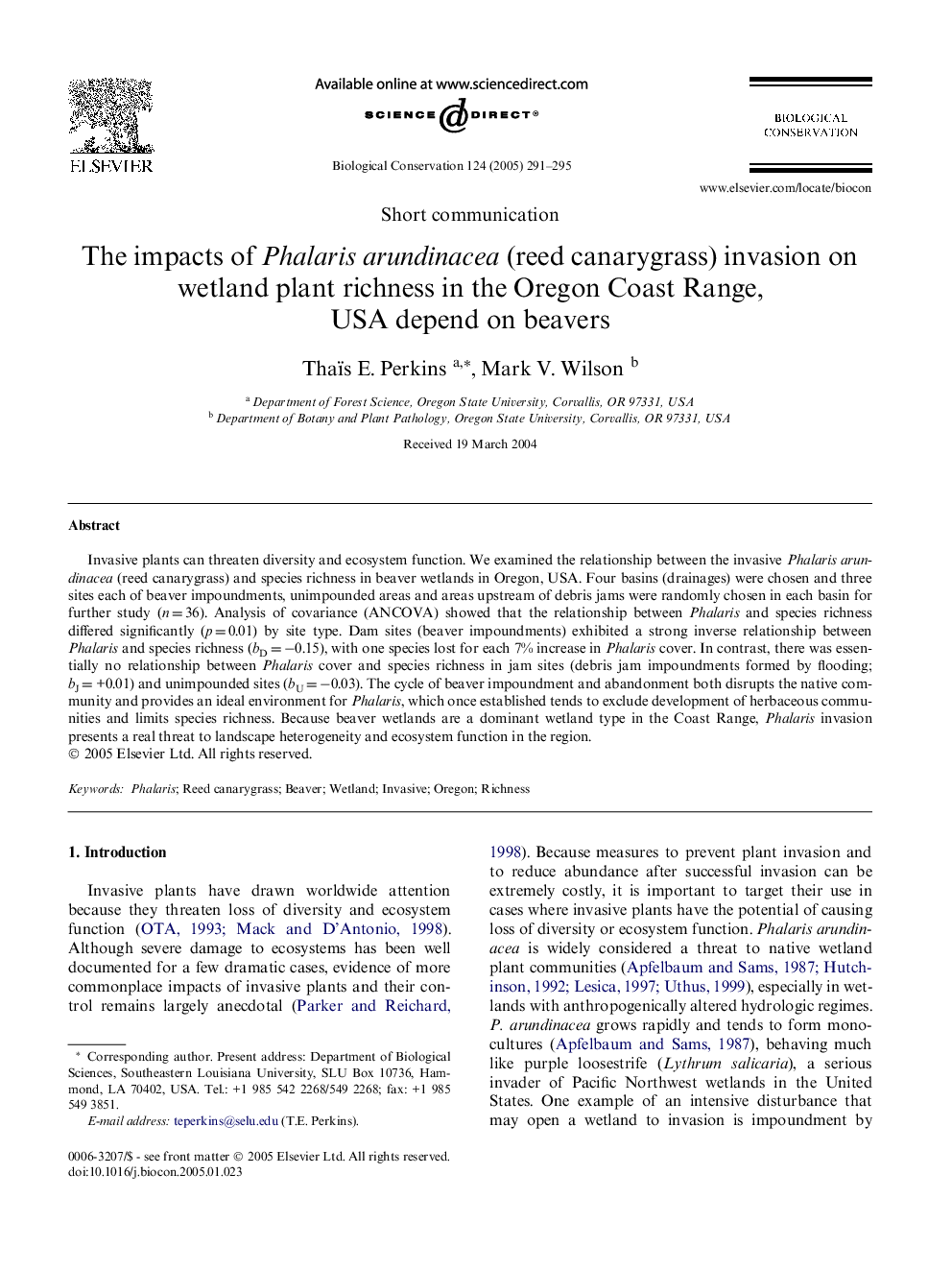| Article ID | Journal | Published Year | Pages | File Type |
|---|---|---|---|---|
| 9445993 | Biological Conservation | 2005 | 5 Pages |
Abstract
Invasive plants can threaten diversity and ecosystem function. We examined the relationship between the invasive Phalaris arundinacea (reed canarygrass) and species richness in beaver wetlands in Oregon, USA. Four basins (drainages) were chosen and three sites each of beaver impoundments, unimpounded areas and areas upstream of debris jams were randomly chosen in each basin for further study (n = 36). Analysis of covariance (ANCOVA) showed that the relationship between Phalaris and species richness differed significantly (p = 0.01) by site type. Dam sites (beaver impoundments) exhibited a strong inverse relationship between Phalaris and species richness (bD = â0.15), with one species lost for each 7% increase in Phalaris cover. In contrast, there was essentially no relationship between Phalaris cover and species richness in jam sites (debris jam impoundments formed by flooding; bJ = +0.01) and unimpounded sites (bU = â0.03). The cycle of beaver impoundment and abandonment both disrupts the native community and provides an ideal environment for Phalaris, which once established tends to exclude development of herbaceous communities and limits species richness. Because beaver wetlands are a dominant wetland type in the Coast Range, Phalaris invasion presents a real threat to landscape heterogeneity and ecosystem function in the region.
Related Topics
Life Sciences
Agricultural and Biological Sciences
Ecology, Evolution, Behavior and Systematics
Authors
Thaïs E. Perkins, Mark V. Wilson,
